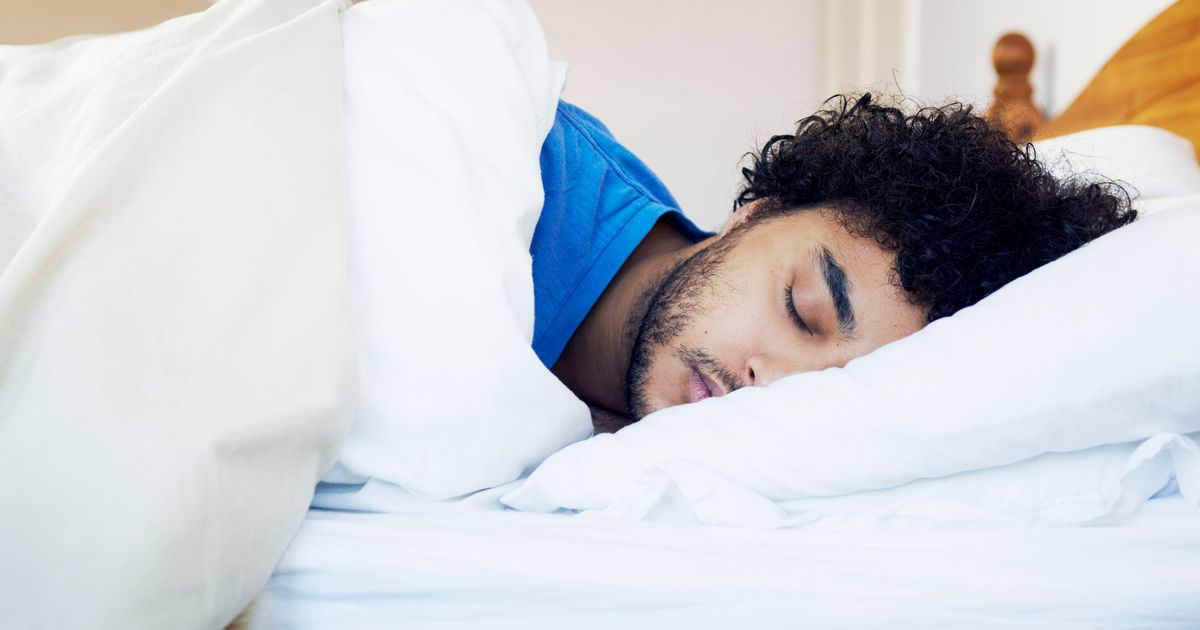If you’ve ever woken up with significantly more wrinkles than you had when you lay down, you’re probably familiar with the term “pillow prints.” Also called “sleep wrinkles” and “sleep creases,” they can be a scary sight to behold, especially before you’ve had your first cup of morning coffee.
We asked experts to tell us what causes pillow prints in the first place, if they’re a sign of a more serious problem, and how to prevent them.
Why am I suddenly so wrinkly?
“Pillow lines are temporary wrinkles that appear due to facial or body positioning during sleep that results in uneven pressure and skin folding,” explained dermatologist Dr. Kristina Collins.
“They’re the result of repetitive pressure on the face,” said dermatologist Dr. Teresa Song of Marmur Medical.
Certain sleeping positions increase the odds of creating them, experts said. “Side sleepers and face-down sleepers will frequently wake up with these creases,” Collins said. “When I see cosmetic patients in consultation, I can almost always tell which side of their face they like to sleep on, because aging is more advanced on that side.”
Why is that? “Prolonged and repetitive pressure on the same areas of the face may contribute to premature aging in the area,” Song explained.
Besides your sleep position, other factors could be a part of the issue. “The natural aging process plays a role,” said dermatologist Dr. Sonia Badreshia. “As we age, our skin loses collagen and elasticity, making it more prone to forming these creases.
“Also, the material of your bedding can impact the likelihood of developing pillow prints. Rougher fabrics can create more pronounced lines, while smoother materials like silk or satin are less likely to cause them.”
It could be a sign of your skin’s health.
“While pillow lines are temporary, the pressure on certain areas of the skin overnight on a regular basis can cause a long-term loss of collagen and elastic tissue, and poor circulation in that region,” Collins said. “This means that in many ways, our moms’ advice to ‘don’t make that face or it might stay that way’ rings true.”
And pillow prints may be an indicator of what’s going on with your skin at a deeper level. Though the marks themselves are harmless, ”the way your skin reacts to them can be a good indicator of its overall health and elasticity,” Badreshia noted.
“If you notice that the lines are taking longer to fade, it could be a sign of decreased skin elasticity, which is a normal part of aging,” she said. “Paying attention to how quickly your skin bounces back from these creases can provide insight into its condition.”
Can you become a back sleeper? It may help.
One thing you can try, although it’s challenging, is to try becoming a back sleeper. “It’s the best position as far as aging is concerned, because if you’re on your back, you avoid direct contact between your skin and the pillow,” said dermatologist Dr. Joshua Zeichner, an associate professor and the director of cosmetic and clinical research for dermatology at The Mount Sinai Hospital.
If that doesn’t work, side and face-down sleepers should consider pillowcases made of ultragentle fabrics, he said. “Silk pillowcases are made of natural fibers, have minimal friction and offer breathability, so they’re an ideal material to fight sleep lines,” he said.
Changing up products in your laundry routine could help too, Zeichner said. “It’s best to wash your pillowcases with a fragrance-free, dye-free detergent,” he said. “Fragrances and dyes are known causes of allergic reactions in the skin, especially when you’re pressed against them for extended periods of time, like when you sleep. Fabric conditioners can soften the fabrics to reduce friction, but they should also be fragrance- and dye-free as well.”
Make sure you’re taking care of your skin all day, and you might have fewer prints at night.
If pillow prints are plaguing you, Badreshia said that it’s smart to look at the bigger picture. “Maintaining good skin health through hydration, a balanced diet and proper skin care routines can also help,” she said. “Well-hydrated and nourished skin tends to recover faster from these temporary creases.”
We Need Your Support
Support HuffPost
Already contributed? Log in to hide these messages.
Your nighttime care routine might need some adjustments, too. “Incorporating a good skin care routine, especially one that includes products that promote collagen production and skin elasticity, can be beneficial not just for reducing pillow prints, but also for overall skin health,” Badreshia said.
Zeichner agreed, recommending the application of moisturizer before bed. “It will help maintain a healthy skin barrier, as will collagen-stimulating ingredients like retinol or peptides that keep the skin foundation as strong as possible and minimize wrinkling,” he said.
Getting enough to drink throughout the day is especially important. “If you’re dehydrated, your skin won’t bounce back as readily,” Collins said. “Maintaining adequate hydration reduces the chance that the pillow prints will set in.”

